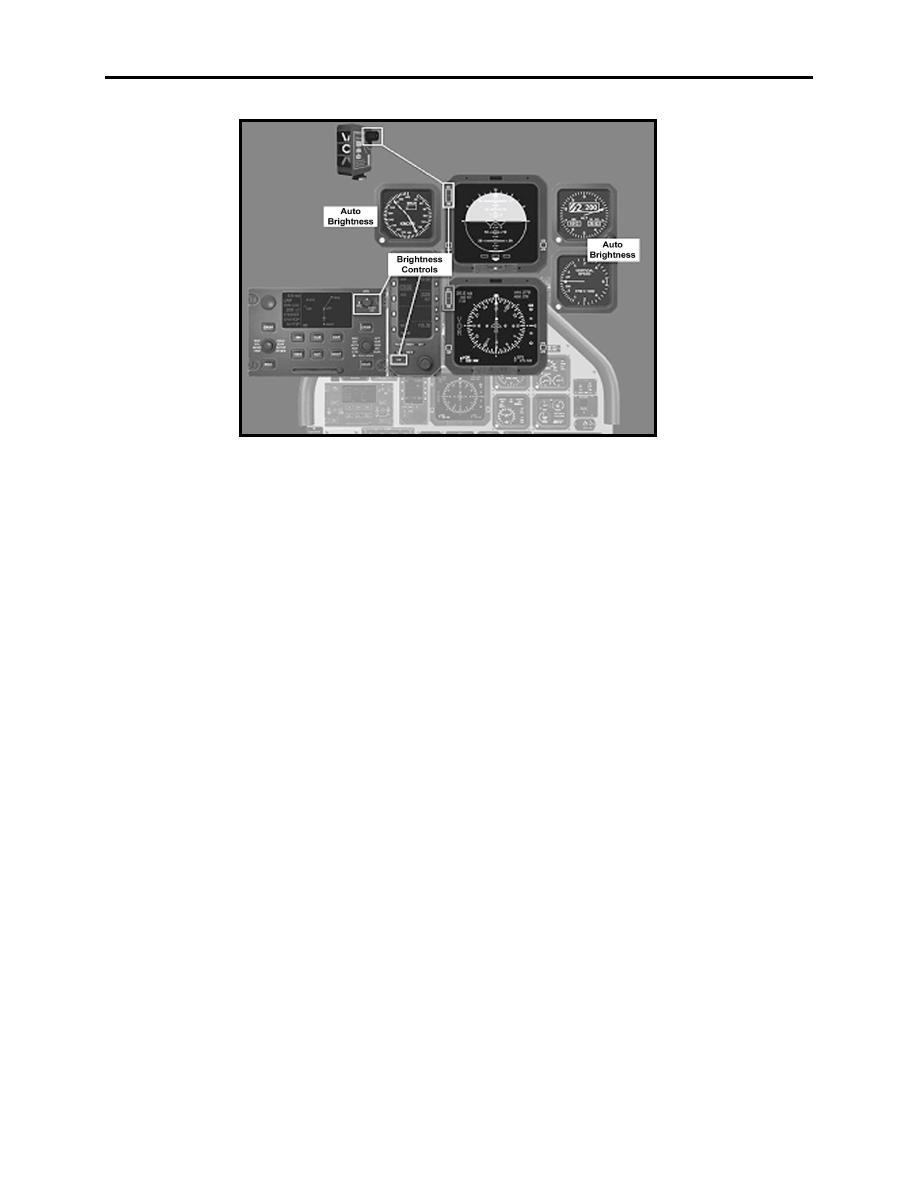 |
|||
|
|
|||
|
Page Title:
Figure 9-2 T-6A Instrument Panel Lighting |
|
||
| ||||||||||
|
|  T-6A CONTACT
CHAPTER NINE
Figure 9-2 T-6A Instrument Panel Lighting
904.
START
The start will be accomplished in the same manner as daylight operations except the NAV lights
switch will be in the ON position and the ANTI-COLLISION (strobe) lights will be OFF.
Cockpit lights will dim during start, so it is recommended you turn the INST FLOOD lights
FULL BRIGHT before starting. After start, continue to dim the INST FLOOD lights and LEDs
as your eyes become adjusted to the darkness.
When the pilot is ready for the start, he/she will signal the lineman by rotating the flashlight at
the lineman or if ambient light permits use appropriate hand signals for clearance to start. The
lineman will repeat the signal with the wand or appropriate hand signal and man the fire
extinguisher for the start.
Upon completion of the start, signal the lineman to remove the chocks by moving the flashlight
alternately from shoulder to shoulder and hold the brakes while the chocks are removed. The
lineman will taxi the aircraft out of the chocks for a normal brake check using his/her wands.
905.
TAXI
Caution must be exercised to prevent excessive taxi speeds caused by lack of outside references
and depth perception. Landing and taxi lights should be used during all night taxi evolutions in
areas not adequately illuminated. Consideration will be given to courteous use of lights to avoid
the disorientation of other aircraft, ground support, and tower personnel. Taxiing is only
permitted on lighted, authorized taxiways. If there is any doubt as to your position on the field or
any confusion caused by light signals, STOP!
NIGHT CONTACT
9-3
|
|
Privacy Statement - Press Release - Copyright Information. - Contact Us |